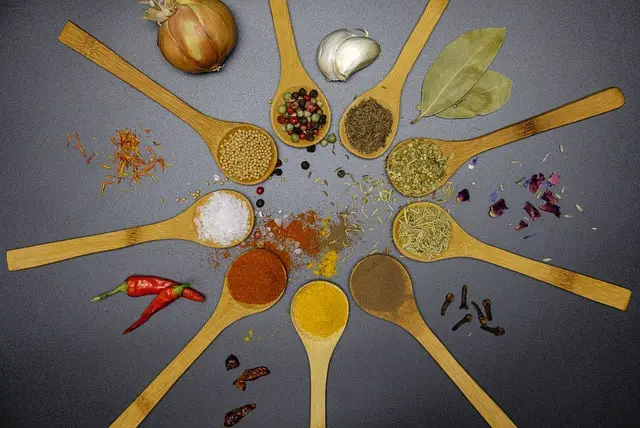Cumin and coriander are valuable additions to your spice rack because they bring diversity to your cooking. Cumin offers bold and warm flavors, adding depth to dishes like curries and tacos, while coriander contributes a fresh, citrusy note that brightens up soups and salads.
Together, they expand your culinary repertoire and allow you to experiment with a wide range of global cuisines.
Let’s take a closer look at each, what they offer, and how to use them in your cooking.
Cumin Characteristics
- Texture: Cumin seeds are small, elongated, and have a slightly wrinkled texture.
- Flavor Release: Cumin has a warm, earthy flavor with a hint of citrus and is known for its strong aroma when toasted.
- Color: Cumin seeds are brown in color.
Coriander Characteristics
- Texture: Coriander seeds are round, smooth, and have a mild, sweet flavor.
- Flavor Release: Coriander has a mild, citrusy, and slightly nutty flavor. It releases a fresh, aromatic scent when crushed.
- Color: Coriander seeds are tan or beige.
Cumin And Coriander Head To Head
Here is a summary of differences between Cumin and Coriander in terms of what they offer and how they compare to each other.
| Characteristic | Cumin | Coriander |
|---|---|---|
| Texture | Small, elongated, wrinkled | Round, smooth |
| Flavor Release | Strong, warm, citrusy | Mild, citrusy, nutty |
| Color | Brown | Tan or beige |
| Common Uses | Chili, curry, tacos, spice blends | Curry, soups, spice blends |
| Baking | Used in bread and some pastries | Less common in baking |
| Storage | Store in a cool, dry place | Store in an airtight container |
| Cost | Moderate | Moderate |
| Smell | Strong and earthy aroma | Fresh and citrusy aroma |
| Taste | Bold and warm | Mild and slightly nutty |
| Culinary Advantages | Adds depth and richness to dishes | Provides a fresh, citrusy flavor |
Food Dishes That Use Cumin
- Chili: Cumin adds warmth and depth to chili con carne.
- Curry: It’s a key ingredient in various curry dishes like chicken curry and vegetable curry.
- Tacos: Cumin is essential for the seasoning of taco meat.
- Spice Blends: Commonly used in spice blends like garam masala and taco seasoning.
- Breads: Some bread recipes, like Indian naan, include cumin for flavor.
Food Dishes That Use Coriander
- Curry: Coriander is a staple in many curry recipes, contributing to their complex flavors.
- Soups: It enhances the taste of soups, particularly in Thai cuisine.
- Spice Blends: Found in spice blends such as curry powder and berbere.
- Pickles: Coriander seeds are used in pickling brines for added flavor.
- Salads: Ground coriander is a common spice in salad dressings.
Final Thoughts
Cumin and coriander are both versatile spices with distinct flavor profiles that complement a wide range of dishes. Understanding their characteristics and culinary advantages can help you use them effectively in your cooking, whether you’re aiming for bold and warm flavors with cumin or fresh and citrusy notes with coriander.
Here are the main differences between cumin and coriander:
- Plants: Cumin comes from the seeds of the Cuminum cyminum plant. Coriander comes from both the seeds and leaves of the Coriandrum sativum plant.
- Appearance: Cumin seeds are smaller and light brown. Coriander seeds are larger, split unevenly and tan colored.
- Flavor: Cumin has a stronger, warmer and earthier flavor. Coriander has a fresh, citrus-like and slightly sweet-sour taste.
- Uses: Cumin is common in Latin American, Indian and Middle Eastern cuisines. Coriander is used widely across European and Asian cuisines.
- Parts used: Cumin seeds are used whole or ground. Coriander seeds are also used ground, while the leaves are popular as fresh cilantro.
- Storage: Both keep well in airtight containers for 1 year. Ground loses potency faster than whole seeds.
- Confusion: “Coriander” often refers specifically to the herb that is called “cilantro” elsewhere outside North America.
So in summary, while both are common spices, cumin is earthier and coriander has a brighter, almost fruity-citrus flavor profile.

